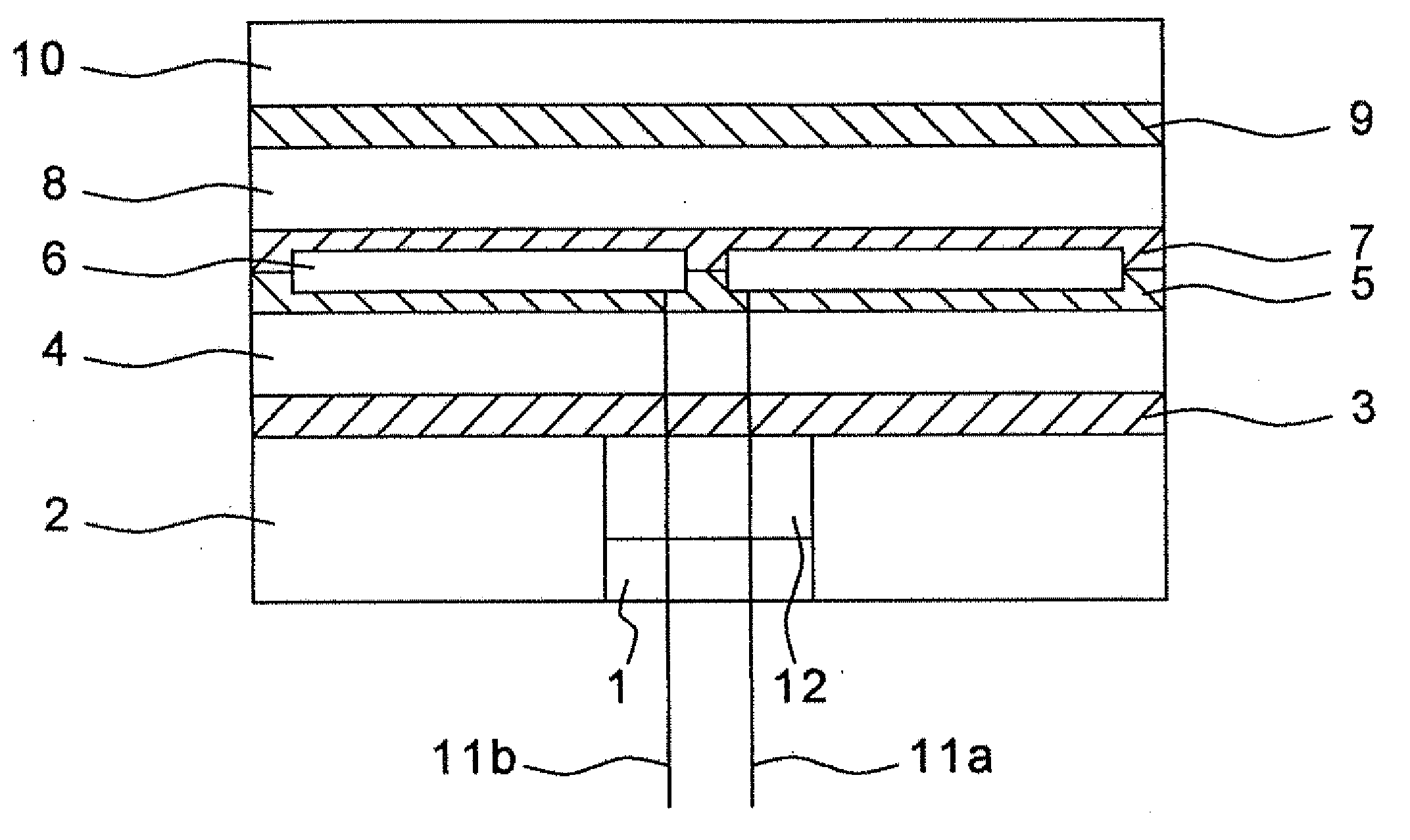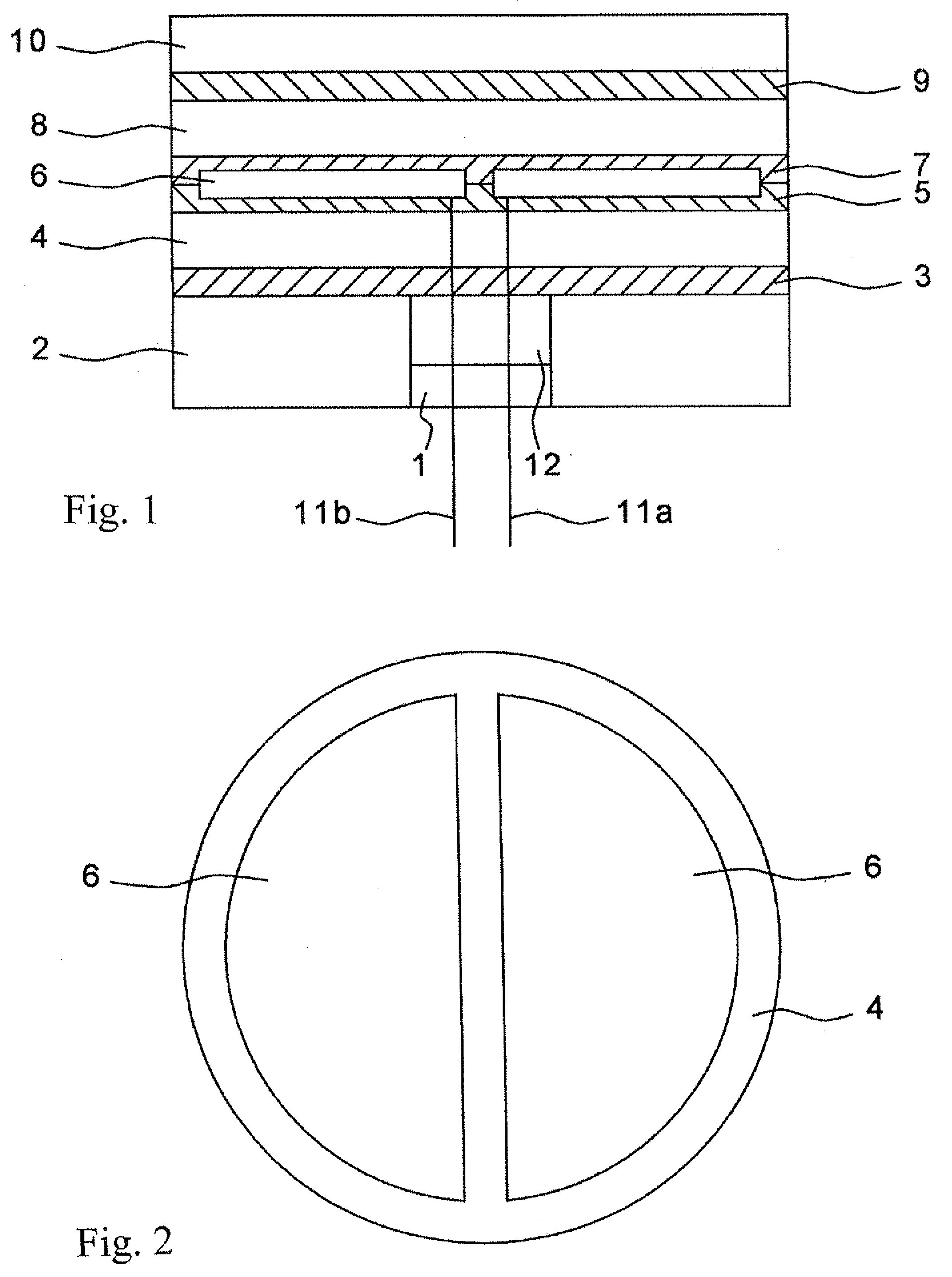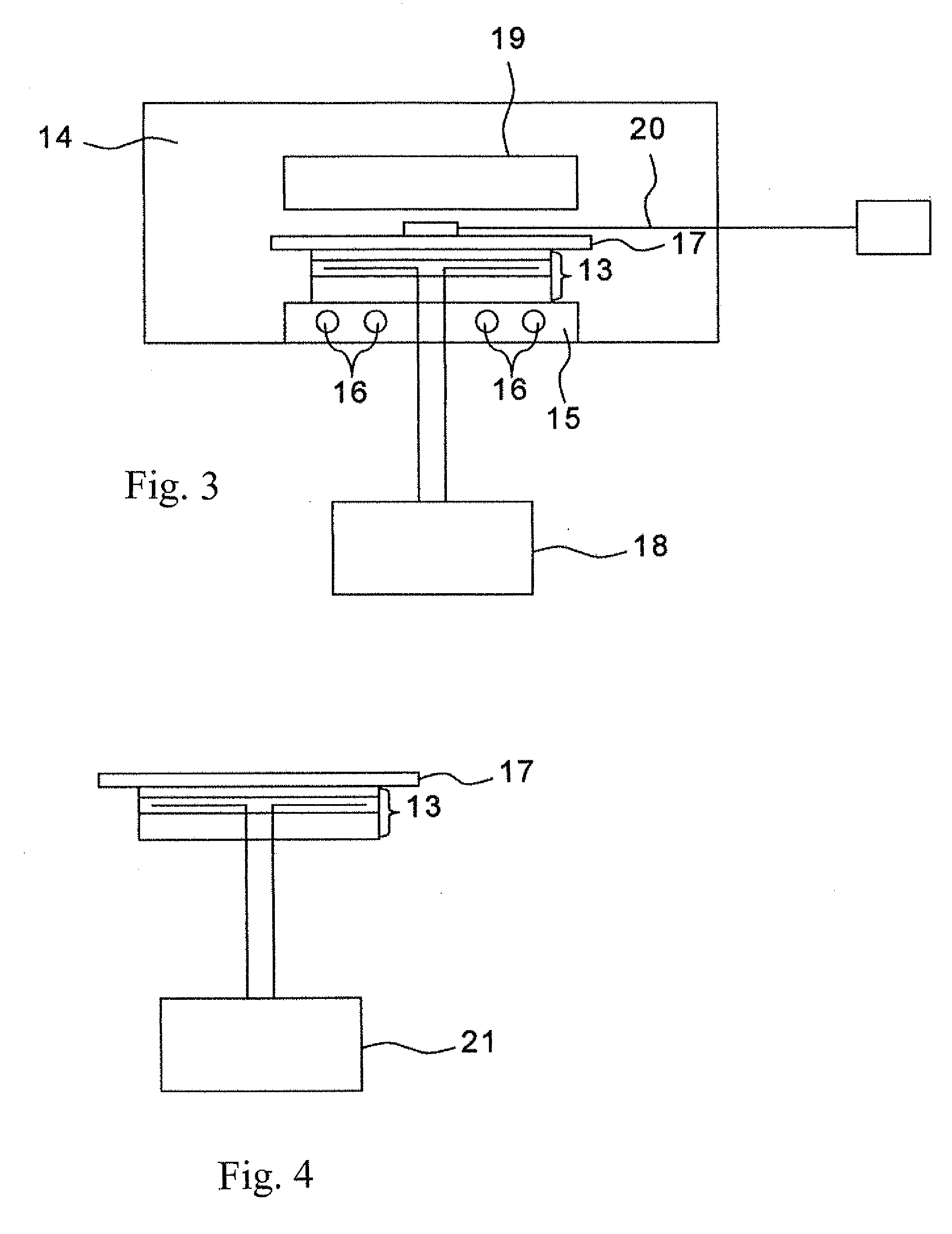Electrostatic chuck
a technology of electrostatic chuck and chuck body, which is applied in the direction of electrostatic holding device, basic electric elements, electric apparatus, etc., can solve the problems of increasing the manufacturing cost of electrostatic chuck, poor adhesion to wafer, and insufficient heat dissipation, etc., to achieve low level of particulate generation, improve cooling performance and insulation performance, and facilitate ion implantation. the effect of smooth operation
- Summary
- Abstract
- Description
- Claims
- Application Information
AI Technical Summary
Benefits of technology
Problems solved by technology
Method used
Image
Examples
example 1
[0055]The electrostatic chuck having the structure shown in FIG. 1 was produced as follows.
[0056]Primer No. 24T (product name, Shin-Etsu Chemical Co., Ltd.) as an adhesive was applied to one side of an electrolytic copper foil (thickness 35 μm) using a brush, and was air-dried for 30 minutes at room temperature to obtain the adhesive layer 5 (thickness 10 μm). The adhesive layer 5 and the first insulating layer 4 comprising an unvulcanized sheet of thermally conductive silicone rubber TC-65BG (product name, Shin-Etsu Chemical Co., Ltd. thickness 650 μm, thermal conductivity 4 W / mK) containing boron nitride were stuck together, and press bonding was performed for 10 minutes at a pressure of 5 MPa and temperature of 170□. Chemical etching of the electrolytic copper foil was performed, and the electrically conducting pattern 6 (copper electrode) having the shape shown in FIG. 2 was thus formed on the first insulating layer 4.
[0057]Next, the liquid silicone rubber adhesive KE1825 (produ...
example 2
[0061]Next, an electrostatic chuck was produced as in Example 1, except the conditions were changed as follows.
(1) Instead of the third insulating layer 10 comprising an unvulcanized sheet of silicone rubber A, the third insulating layer 10 of an unvulcanized sheet of a silicone rubber B (thickness 120 μm, the properties of cured silicone rubber A were: hardness 63, tensile strength 8.8 MPa and surface roughness 0.5 μm), which was prepared by blending 100 mass parts of an organo-polysiloxane (composition, methylvinylpolysiloxane having an average degree of polymerization of 8000 comprising 99.85 mol % of dimethylsiloxane units and 0.15 mol % of methylvinyl siloxane units) with 50 mass parts of fumed silica Aerosil 200 (product name, Japan Aerosil Co., Ltd.) having a specific surface area of 200 m2 / g, and 0.7 mass parts of 2,5-dimethyl-2,5-di(tert-butylperoxy) hexane, was used.
(2) Instead of the second insulating layer 8 comprising a 25 μm-thick polyimide film, the second insulating ...
example 3
[0062]An electrostatic chuck was produced as in Example 1, except that instead of the liquid silicone rubber adhesive KE1825 used for the adhesive layer 7 and adhesive layer 3, a thermally conductive silicone rubber adhesive KE1862 (product name, Shin-Etsu Chemical Co., Ltd.) was used.
Evaluation of Electrostatic Chucks of Examples 1-3
Cooling Performance
[0063]The cooling performance of each of the electrostatic chucks obtained in Examples 1-3 was evaluated. A cooling performance tester was used for the evaluation. FIG. 3 is a longitudinal cross-section showing an outline of the construction of the cooling performance tester. In FIG. 3, 13 is an electrostatic chuck, 14 is a chamber, 15 is a stand, 16 are cooling tubes, 17 is a wafer, and 18 is a power supply. The electrostatic chuck 13 is mounted on the stand 15 in the chamber 14, and cooling water is circulated through the cooling tube provided on the stand 15 to cool the electrostatic chuck 13. After installing the wafer 17 on the e...
PUM
 Login to View More
Login to View More Abstract
Description
Claims
Application Information
 Login to View More
Login to View More - Generate Ideas
- Intellectual Property
- Life Sciences
- Materials
- Tech Scout
- Unparalleled Data Quality
- Higher Quality Content
- 60% Fewer Hallucinations
Browse by: Latest US Patents, China's latest patents, Technical Efficacy Thesaurus, Application Domain, Technology Topic, Popular Technical Reports.
© 2025 PatSnap. All rights reserved.Legal|Privacy policy|Modern Slavery Act Transparency Statement|Sitemap|About US| Contact US: help@patsnap.com



